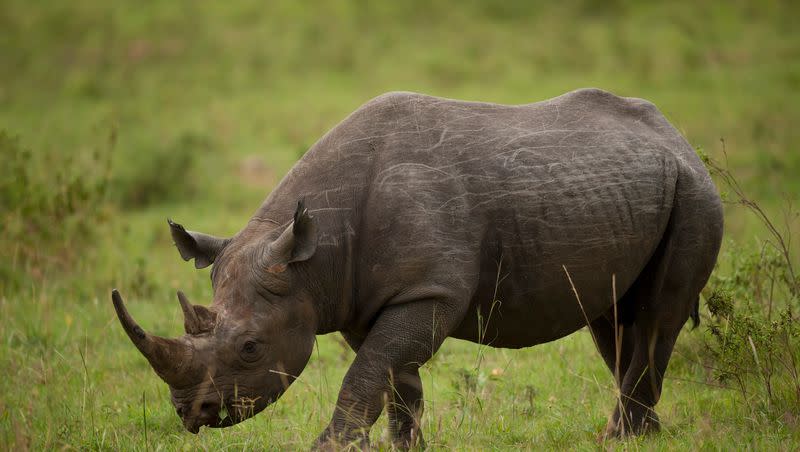Dehorning rhinos to prevent poaching has made them more anti-social

Although given protected status, the black rhino continues to suffer at the hands of poachers who are looking to make a profit off the beast’s horn.
The black rhino is the smaller of the two rhino species in Africa, falling behind the white rhino. Both species have had devastating population loss. The International Rhino Foundation reported the white rhino at a population of less than 16,000 and the black rhino with a little more than 6,000 in total.
Since the 20th century, conservationists have been sawing down rhino horns to deter poachers from killing the animals to make a profit on the black market, their horns the prize. In a study published in the Proceedings of the National Academy of Sciences, researchers looked into whether or not rhino ranging patterns and social interaction changed following their safe horn removal.
Rhino horns are made of keratin, which is the same protein that make up our hair and nails, so they do grow back over time. The horn removal costs hundreds of dollars per animal and because they grow back, conservationists have to repeat the process every 18-24 months.
Vanessa Duthé, lead study author, found that removing the horn from the animal did in fact cause a change in them socially.
“It’s definitely disrupting their social networks. ... It’s sort of like if you put a muzzle on a dog,” Duthé said. “They’re not so sure of themselves anymore. They’ve lost their main defense and their confidence,” per The New York Times.
Related
Researchers do not have enough evidence to conclude whether or not this vulnerability that dehorned rhinos are experiencing is going to have a positive or negative effect on them.
When they observed 368 rhinos over time, Duthé and her colleagues concluded that the territory for dehorned rhinos shrank on average 45% or about 4.5 miles. Male rhinos lost around 38% of their territory whereas females had a more dramatic impact, with 53% of their territory lost, according to Science.
Like clipping your fingernails, specialists say the horn removal procedure is painless for the animal. The rhino is tranquilized, blindfolded and earplugs are used to muffle the sound of the chainsaw to reduce the stress the rhino may be experiencing.
However, there is still no clear conclusion that dehorning is effective in decreasing poaching.
Michael ’t Sas-Rolfes, a conservation economist at Stellenbosch University in South Africa, who was not involved in the study, told The New York Times that dehorning is a “somewhat desperate measure.”
He added, “It’s all very well to be in favor of ideal solutions, but we must be pragmatic in the short run to ensure that rhinos survive the ongoing poaching onslaught. The fact that dehorning is so widely employed now is indicative of how serious the poaching problem remains.”

